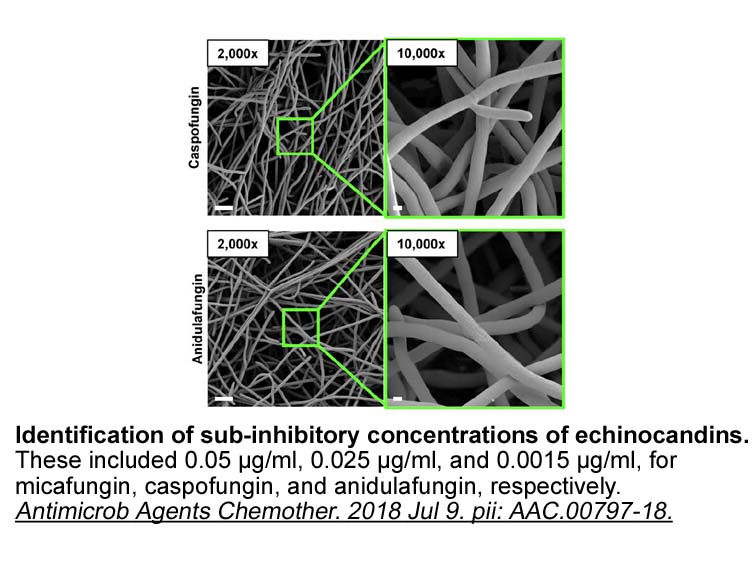Archives
For the first series we
For the first series we decided to verify the effects induced, on the ALR2 inhibitory properties, of an additional steric hindrance on the carbon in α position with respect to the carboxylic group, by introducing a methyl group (R2=Me). Theref ore, we synthesized a series of new α-alanine derivatives of Type 1 (R1=H) and 2 (R1=OMe) (Fig. 5) in order to explore the structure activity relationship and obtain useful information for further structure-based optimization within this Vandetanib hydrochloride class of compounds. Similar to other
ore, we synthesized a series of new α-alanine derivatives of Type 1 (R1=H) and 2 (R1=OMe) (Fig. 5) in order to explore the structure activity relationship and obtain useful information for further structure-based optimization within this Vandetanib hydrochloride class of compounds. Similar to other  well known carboxylate Type ALR2 inhibitors these compounds possess a carboxylic head group that should occupy the anion binding pocket, attached through a spacer to two aromatic moieties that may contribute to an efficient fit in the lipophilic region of the ALR2 binding site including the specificity pocket. The electron-withdrawing (Cl) substituent was introduced around the benzylic ring of all the synthesized compounds.
To investigate if the novel α-alanine compounds displayed a parallel SARs to those previously studied,27, 28, 29 for the second series we synthesized the compounds of Type 3 (R2=Me, n=0). Then for the third series, we synthesized compounds of Type 4 (R2=Me, n=1), superior homologous of Type 3 in which a benzylamidic group instead of a benzoylic group was present on the nitrogen (Fig. 5).
well known carboxylate Type ALR2 inhibitors these compounds possess a carboxylic head group that should occupy the anion binding pocket, attached through a spacer to two aromatic moieties that may contribute to an efficient fit in the lipophilic region of the ALR2 binding site including the specificity pocket. The electron-withdrawing (Cl) substituent was introduced around the benzylic ring of all the synthesized compounds.
To investigate if the novel α-alanine compounds displayed a parallel SARs to those previously studied,27, 28, 29 for the second series we synthesized the compounds of Type 3 (R2=Me, n=0). Then for the third series, we synthesized compounds of Type 4 (R2=Me, n=1), superior homologous of Type 3 in which a benzylamidic group instead of a benzoylic group was present on the nitrogen (Fig. 5).
Material and methods
Results and discussion
All the synthesized compounds were tested for their activity and against ARL2 and selectivity towards ARL1. Results obtained are shown in Table 1.
Compounds 1a–d, 2a–d, and 7a–d were assayed as racemic mixtures, to identify the best ALR2 inhibitor that will be further studied for the functional properties of each enantiomeric form. Within these series, the electron-withdrawing (Cl) substituent is introduced around the benzylic ring of all the synthesized compounds.
Most of the tested compounds of Type 1 and 2 proved to inhibit ALR2, exhibiting potency levels in the micromolar range. By observing the data of Table 1 we can evidence the following structure-activity relationship (SAR):
In order to assess the importance of the amide function were also tested acids 9a–d devoid of this group and intermediate for the synthesis of Type 2 compounds. Compounds 9a–d were found to be completely inactive.
Unlike sorbinil (IC50ALR1 >10μM versus ARL1=0.029μM, respectively), none of the synthesized compounds 1–4 tested at 100μM showed to have an appreciable activity against ARL1, proving to be completely selective towards the ALR2 enzyme.
The inhibition profile of the most active compounds, 1d and 2b, is quite similar to that of sorbinil on ALR2 isoform whereas they prove to possess a better selectivity ALR2/ALR1 than sorbinil being completely selective towards the ALR2 enzyme. ALR1, in fact, is thought to be the main responsible of side effects and for this reason a clinically effective and safe ARI should be able to inhibit ALR2 selectively.
Conclusions
ALR2 is involved in the pathogenesis of several diabetic complications. On the basis of the above considerations, we investigated a new series of N-(aroyl)-N-(arylmethyloxy)alanines (1–4) obtained by an original synthesis. These compounds were found highly selective for ALR2 enzyme because they have no inhibitory activity against ALR1. The selectivity for ALR2 is considered as a great advantage for aldose reductase inhibitors because of reduction of the risk of side effects. The results of this work have allowed us to consider 1d and 2b a good starting point for further optimization to obtain new drugs useful in preventing or delaying the onset of diabetes complications.
Experimental
Acknowledgements
This work was supported in part by the University of Pisa – Italy (Fondi di Ateneo and PRA_2016_27).
Diabetes mellitus (DM) is a group of metabolic diseases characterized by hyperglycemia resulting from defects in insulin secretion, insulin action, or both. The chronic hyperglycemia of diabetes is associated with long-term damage, dysfunction, and failure of different organs, especially the eyes, kidneys, nerves, heart, and blood vessels. Statistical data indicated that over 400 million people worldwide were suffering from DM by the year 2015 and this number is expected to increase steadily to 642 million by 2040, people with DM bear a much higher economic and physical burden. All forms of diabetes including type I and type II are vulnerable to chronic diabetic complications, and those diseases are the major menace to diabetic patients. Increasing evidence established that the abnormal polyol pathway flux is obviously related to pathogenesis of diabetic complications.